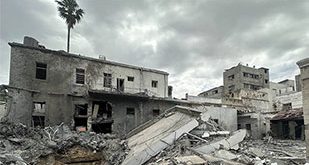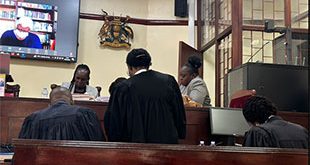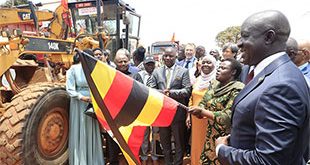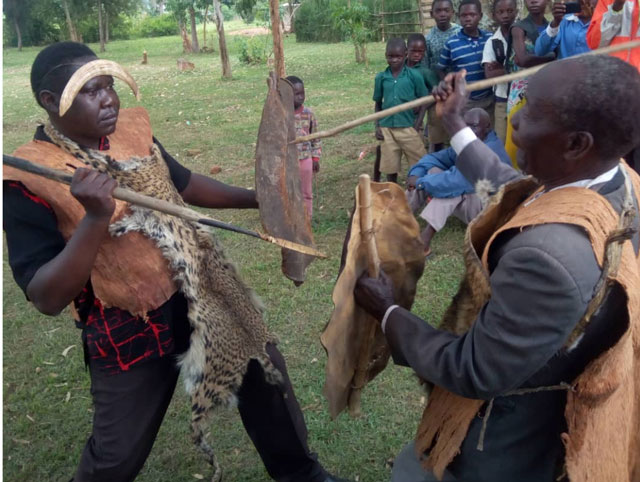
UGANDA HISTORY | Prof. P.G. Okoth & Dr. Yokana Ogolla | The Jopadhola were part of migrant groups of Luo people who moved from Bar-El-Ghazel in South Sudan and eventually pressed their way southwards through Teso and Kaberamaido till they reached Budama in present Tororo district around 1500.
Adhola moved with his brother Owiny who led a group through Tororo to western Kenya .
The group that remained in Tororo under Adhola later constituted the present Jopadhola ethnic group which developed a distinct social, political and economic system that survived and served as their identity, and later realized unity and harmonious interaction with the environment. Jopadhola are found in present day Tororo district.
By the time they arrived, the area was a mere geographical expression with sparse population. They finally settled in what came to be known as Budama region where they evolved into a society held together by common ethnic consciousness as the Jopadhola people, bound together under the Bura cult and the worship of Nyakiriga god. The migrants then embarked on massive clearing of the forests for settlement and cultivation.
It was largely a peaceful settlement which saw the emergence of settled lifestyle, unity of diverse family groups or clans and the role of elders as major stake holders in the political and cultural transformation of the society. The predominant core Luo clans included the Amor, Biranga, Nyapolo and Koi .
Jopadhola later on interacted, sometimes violently with neighboring ethnic groups that had settled in the region, for example the Gisu, Nyole, Soga and later the Iteso who were pastoralists looking for pasture and water. The first groups of Iteso arrived around 1810-1840 and settled in Kwapa. With time, the number of Iteso increased especially in the eastern part of Budama.
Jopadhola possessed a political cultural community with strong clan units that evolved from close association of several families headed by elected leaders that ensured justice, development and transformation. Clans and lineages were corporate bodies that constituted the individuals center of identity, reference, reputation and pride. Clan leaders therefore, possessed tremendous political and cultural authority. They were patrons of development activities.
It was in this clan based system that Majanga emerged into the political history of Padhola. He soon became a Hero because he combined several attributes: he was a member of Nyapolo Ogule clan, the supreme clan, possessed powers of divination, a military leader, afore-teller and charismatic personality. He used these qualities to unite all Padhola clans into one political entity thus, becoming the father of Padhola traditional heritage.
Jopadhola also possessed aspects of socialization that included distinct social structures, rules and regulations regarding issues such as marriage, death, religion, the family, social relations, leisure time and gender relations. In all these activities, however, the patriarch remained dominant with gender relations seriously skewed against women and the girl child.
Jopadhola were mixed farmers who reared domestic animals and cultivated food crops for subsistence. Barter trade was practiced both among the Jopadhola and with neighboring communities.
It was in these social-political and economic situation that in 1903, colonial rule reached Padhola through the medium of Baganda agents headed by Semei Kakungulu.
Padhola was subsequently divided into local government administrative units basing on the Buganda hierarchical system, manned by Baganda agents, later by locally appointed indigenous chiefs. They were empowered to keep law and order, collect taxes and implement colonial government policies.
Colonial rule was preceded in Padhola by the coming of Christianity. By 1902, both the Roman Catholics and Church Missionary Society had already established themselves in Padhola.
However, they brought with them elements of disunity and conflict that started in Buganda. Right from the beginning, the Protestant Church identified itself with the colonial state. Both groups started massive recruitment of converts into their faiths. The Catholic missionaries started with the ruling Nyapolo Ogule clan in Senda. Nagongera Mission was established in 1913 and by 1930, the CMS was already in Kisoko.
It is on record that the Christian Churches spearheaded formal education in Padhola. The Roman Missionaries opened a primary school in Nagongera in 1931.
By 1925, there were several mission schools in many parts of Padhola. The Catholic Church especially played a vital role during the periods of famine and epidemics. However, Christianity divided Jopadhola into two hostile factions of Catholics and Protestants. This later on affected the unity and political development in Padhola .
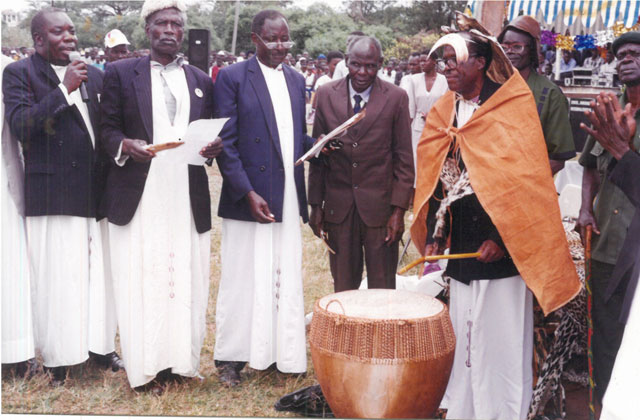
After a cultural ritual performed by a one Opeti Obieto (now the late), His Grace Yona Okoth (RIP) the then Archbishop of the Church of Uganda prayed over the new cultural head. Moses Ali then 2nd Deputy Prime Minister represented the Uganda government.
Jopadhola therefore, found themselves in the colonial situation in which the government introduced the money economy, payment of taxes, and mandatory cultivation of cotton as a cash crop whose prices and marketing were determined by the state through the Indian middlemen. By this arrangement, Padhola was integrated with the world wide capital system.
Local government was manned by a hierarchy of appointed chiefs headed at the top by the Saaza chief and the District Commissioner as the overall boss. A legal system was established with local guards to ensure compliance with colonial policies. The chiefs in particular, most of whom were Protestants, performed their duties with a lot of force and unfairness to their own people.
There were cases of brutality, unlawful arrests and detention, forced labor, corruption and unfair tax assessment and collection. These led to violent protests of 1905 and 1960.
At some point, the colonial state was thrown into confusion by the state of disunity among Jopadhola clans and between the Jopadhola and the Iteso community based in Tororo.
The Nyapolo Ogule clan which was the dominant clan and predominantly catholic wanted to rule Padhola. This could not be allowed by the other clans, most of which were Protestants. They had many of their children who had obtained formal education, they also had the support of the colonial state.
The Iteso wanted to be recognized as an independent ethnic group. The Jopadhola could not allow this kind of development noting Budama was their land. However the colonial state decided in 1938, to divide Budama County into East and West making two County headquarter for easy administration. West Budama remained with the original headquarter at Kisoko while East Budama had its headquarter at Mukuju. Both headquarters were equidistant (6 miles) from the Main Post office at Tororo. Both religions and inter-clan conflicts were serious problems in Padhola.
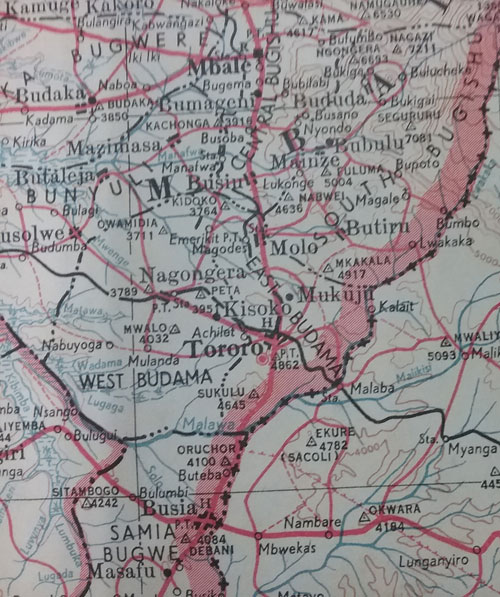
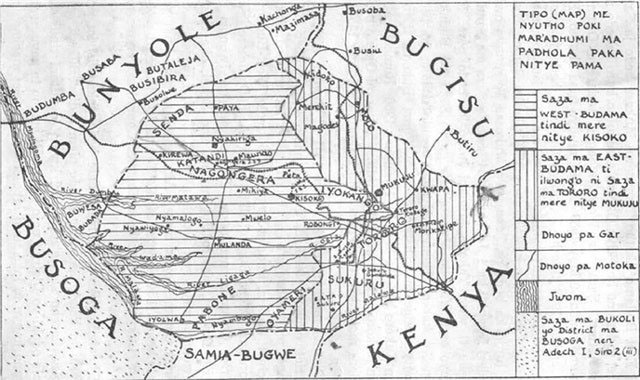
The selection and recruitment of chiefs was based on factors that included patron-client relations, religion, kinship, protégé relations, education, the way people kept their homes and engaged in agriculture. They were mainly engaged in tax collection, social welfare development, colonial economic development and ensuring food security .
Colonial rule disrupted the indigenous political structure when they defeated, captured and imprisoned Majanga in Jinja. Gender relations were skewed in favor of men, at district level, Jopadhola were at odds with the Iteso, at Padhola level, there were divisions based on religion and clan differences .
This kind of situation transcended the post-independence period till 1986 when the NRM government came to power and introduced revolutionary changes that included the recognition of traditional cultural organizations throughout the country. This was included in the 1995 Uganda constitution.
It was in response to this development that the Jopadhola Clan elders took a bold step to establish the Institution of Tieng Adhola under His Royal Highness the Kwar Adhola, Moses Stephen Owor, whose coronation is being celebrated today, 7th August, 2019.
Sources
Crazzolara, 1950
Ogot, 1996
Ogot, 1967
Oboth, 1960; Ogot, 1967
Oboth, 1960; Burke, 1964
Burke, 1964; Mbiti, 1985
Burke and Southhall, 1956
Okoboi; 1964; Kauta,2007
Traddle, 1993; Ogola, 2016
Kabwegyere, 1995
Ibid.
*****
SOURCE: TACI Coronation 20th anniversary magazine August 2019
*****
📌UPDATE: August, 2024 after 25th anniversary celebrations
BOOK: The book HISTORY OF JOPADHOLA FROM EARLY TIMES TO THE PRESENT is on sale at sh30,000 – 0702278726
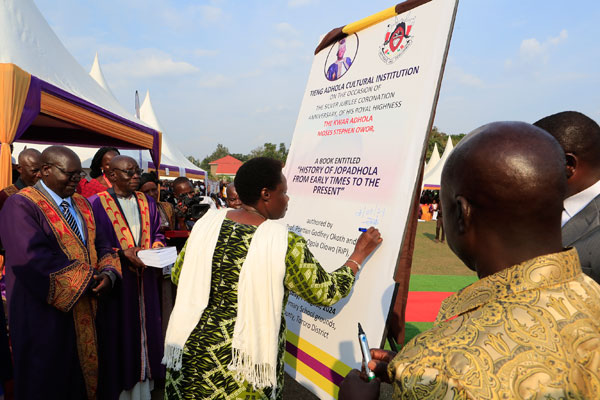
 The Independent Uganda: You get the Truth we Pay the Price
The Independent Uganda: You get the Truth we Pay the Price

